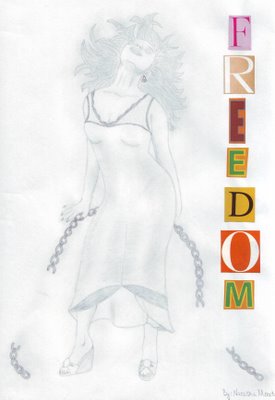Guns in the hands of men means that they are in the hands of the gender that is responsible for the majority of the acts of domestic violence. In 2001, women accounted for 85 percent of the victims of domestic violence (588,490 total) and men accounted for only approximately 15 percent of the victims (103,220 total). Thus, men make up the majority of gun owners as well as aggressors in domestic violence situations. Consequentially, many acts of domestic violence ultimately end in a gun related homicide.
Having a gun in the home makes it three times more likely that a family member or intimate partner will murder you or someone you care about. But what is even more alarming is in cases of prior domestic violence in the household, a woman is 14.6 times more likely to be the victim of a homicide and in cases where there are one or more guns in the home, a woman is 7.2 times more likely to be the victim of such a domestic homicide.
These kinds of startling statistics were the force behind the passing of The Domestic Violence Offender Gun Ban in 1996. The ban was an amendment to the Omnibus Consolidated Appropriations Act of 1997 which was passed by the 104th US Congress in the Fall of 1996. Officially the ban is known as the Gun Ban for Individuals Convicted of a Misdemeanor Crime of Domestic Violence, 18 U.S.C. § 922(g)(9) and is often referred to as the Lautenberg Amendment after its sponsor, Frank Lautenberg. The Lautenberg Amendment bans the shipment, transport, ownership and use of guns or ammunition by individuals convicted of misdemeanor or felony domestic violence. This law also makes it unlawful to sell or give a firearm or ammunition to such person.
Guns remain in the hands of men who commit domestic violence despite the Lautenberg Amendment's protection. Prior to making possession illegal, the Lautenberg Amendment requires a conviction of the misdemeanor offense of domestic violence. Prior to getting a conviction, the crime has to be reported. Unfortunately, the applicability of the ban to police officers and military personnel has discouraged many victims from reporting the crime. The prohibition of gun possession under the Lautenberg Amendment applies to any misdemeanor conviction in domestic violence; even if the offender's job requires the possession of a gun, such a police officers and military personnel. The result is that many police officers and military personnel generally lose their job after a domestic violence conviction. Many victims of domestic violence choose not to report an offense in an effort to protect their abuser and often the sole source of their family's income. Unreported cases of domestic violence result in guns remaining in the hands of violent men. As illustrated by the above statistics, the likelihood that the situation will escalate into a homicide is greatly increased.
Unfortunately, while the Lautenberg Amendment may provide for some protection from the unproportional threat of gun violence against women, victims still need to take action to report the violence and then get a conviction before the gun can be removed from the hands of the abuser. Ultimately, in order for the Lautenberg Amendment to provide victims of domestic violence from the threat of homicide, the ban on guns needs to take place prior to the conviction. Consequentially, naughty boys should not get to play with their toys.



